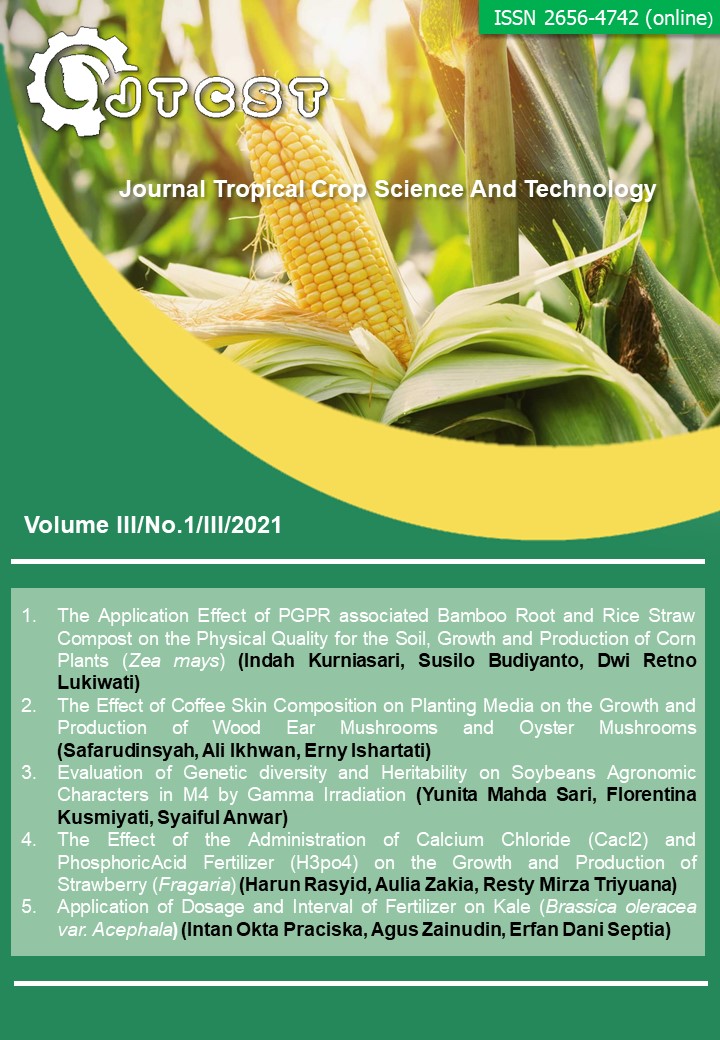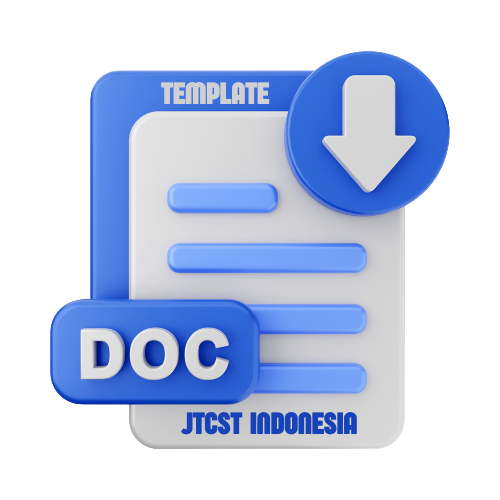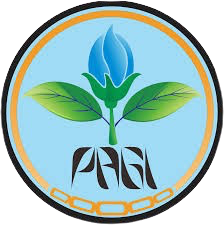The Application Effect of PGPR Associated Bamboo Root and Rice Straw Compost on The Physical Quality for the Soil, Growth and Production of Corn Plants (Zea mays L)
DOI:
https://doi.org/10.22219/jtcst.v3i1.13437Keywords:
corn, rice straw compost, PGPR, organic matter, decompositionAbstract
This research aims to examine the effect of application bamboo root PGPR and rice straw compost on the physical quality of the soil, growth and production of the corn plant (Zea mays). This research was arranged in split plot design 3 x 4 with 3 replications. The main plot is rice straw compost (K): K1=10 ton/ha, K2=15 ton/ha, K3=20 ton/ha. The subplot is PGPR (P): P0= 0 ml/l (control), P1=10 ml/l, P2=15 ml/l, P3=20 ml/l. The parameters observed were soil porosity, soil water content, plant height, number of leaf, cob length, cob weight, weight of seed and field. Data were analyzed extensively and continued with Duncan Multiple Range Test (DMRT). The results showed that the treatment of PGPR and rice straw compost increases with the addition of dose. Treatment of PGPR provide a significant response to increase in the porosity, soil water content and number of leaf compared to the control, while the length of cob and weight of seed showed an increase in the addition treatment of a dose compost and PGPR. Treatment of PGPR or rice straw compost has yet to show a response different to the plant height. The interaction treatment significant on the weight of cob and field. The results of the optimal corn crop is achieved at the treatment dose of 15 ton/ha compost straw combined with PGPR dose of 15 ml/l.
Downloads
References
Anisa, K. dan Sudiarso. 2019. Pengaruh Plant Growth.Promoting Rhizobacteria (PGPR) dan pupuk hijau (C. juncea) pada pertumbuhan dan hasil tanaman jagung manis (Zea mays saccharata Sturt.). J. Produksi Tanaman.7(10): 1893-1901.
Aryanto, A., Triadiati dan Sugiyanta. 2015. Pertumbuhan dan produksi padi sawah dan gogo dengan pemberian pupuk hayati berbasis bakteri pemacu tumbuh di tanah masam. J. Ilmu Pertanian Indonesia. 20 (3): 229–235.
Asroh, A. 2010. Pengaruh takaran pupuk kandang dan interval pemberian pupuk hayati terhadap pertumbuhan dan hasil tanaman jagung manis (Zea mays saccharata L.). Jurnal Agronobis. 2(4): 1–6.
Azrai, M. 2015. Jagung hibrida genjah: prospek pengembangan menghadapi perubahan iklim. J. IPTEK Tanaman Pangan, 8(2): 109-113.
Dewanto, F.G., J.J.M.R. Londok., R.A.V. Tuturoong dan W.B. Kaunang. 2013. Pengaruh pemupukan anorganik dan organik pada produksi tanaman jagung sebagai sumber pakan. J. Zootek, 32(5):1–8.
Dinas Pertanian dan Pangan Kabupaten Kendal. 2016. Statistik Pertanian, Peternakan dan Perkebunan Kabupaten Kendal. Dinas Pertanian dan Pangan Kabupaten Kendal, Kendal.
Direktorat Pangan dan Pertanian. 2013. Studi Pendahuluan: Rencana Pembangunan Jangka Menengah Nasional (RPJMN) Bidang Pangan dan Pertanian 2015 – 2019. Direktorat Pangan dan Pertanian Bappenas, Jakarta.
Habi, M.L. 2016. Pengaruh pemberian kompos granul diperkaya pupuk ponska terhadap sifat fisik tanah dan hasil jagung manis di inceptisol. J. Budidaya Pertanian, 12 (1): 41-50.
Hamzah, U.R.U., R.T. Purnamasari dan S.H. Pratiwi. 2019. Pengaruh lama pengomposan serbuk gergaji kayu jati (Tectona grandis L.) dan dosis EM4 terhadap efisiensi unsur hara serta pertumbuhan dan hasil tanaman kubis bunga (Brasicca oleracea L.) Var. dataran rendah. J. Agroteknologi Merdeka Pasuruan. 3 (1): 1-8.
Hipi, A., B. Giyanto dan T.R. Erawati. 2017. Peningkatan produktivitas benih jagung hibrida dengan aplikasi mikroba dan pupuk fosfat. Prosiding Seminar Nasional Agroinovasi Spesifik Lahan. Lampung 19-20 Oktober 2016. Hal. 328-337.
Husnain. 2010. Kehilangan unsur hara akibat pembakaran jerami padi dan potensi pencemaran lingkungan. Prosiding Seminar Nasional Sumberdaya Lahan Pertanian. Bogor, 30 November - 1 Desember 2010. Hal. 91 – 96.
Ikhsanti, A., B. Kurniasih dan D. Indradewa. 2018. Pengaruh aplikasi silika terhadap pertumbuhan dan hasil tanaman padi (Oryza sativa L.) pada kondisi salin. J. Vegetalika. 7 (4) : 1–11.
Jumini., Nurhayati dan Murzani. 2011. Efek kombinasi pupuk N P K dan cara pemupukan terhadap pertumbuhan dan hasil jagung manis. J. Floratek. 6 (1): 165 – 170.
Kusumaningtyas, A.S., P. Cahyono., Sudarto dan R, Suntari. 2015. Pengaruh tinggi muka air tanah terhadap pH, Eh, Fe, Aldd, Mn dan P terlarut pada tanaman nanas klon GP3 di ultisol. J. Tanah dan Sumberdaya Lahan, 2 (1): 103-109.
Muyassir, Sufardi, dan I. Saputra. 2012. Perubahan sifat fisika inceptisol akibat perbedaan jenis dan dosis pupuk organik. J. Lentera, 12 (1) : 1 – 8.
Nurahmi, E. 2010. Kandungan unsur hara tanah dan tanaman selada pada tanah bekas tsunami akibat pemberian pupuk organik dan anorganik. Jurnal Floratek. 5 (1) : 74 – 85.
Pasta, I., A. Ette dan H. N. Barus. 2015. Tanggap pertumbuhan dan hasil tanaman jagung manis (Zea mays L. Saccharata) pada aplikasi berbagai pupuk organik. E-Jurnal Agrotekbis. 3 (2) : 168 – 177.
Prihartini, T.,2009.Mikroorganisme Meningkatkan Efisiensi Pemupukan Fosfat.http://www.pustakadeptan.go.id/publikasi/wr254036.pdf. Diakses tanggal 22 Januari 2020.
Rahni, N.M. 2012. Efektivitas fitohormon PGPR terhadap pertumbuhan tanaman jagung (Zea mays). J. Agribisnis dan Pengembangan Wilayah. 3 (2): 27 – 35.
Rao, N.S. 2007. Mikroorganisme dan Pertumbuhan Tanaman. UI Press. Jakarta.
Rosinawaty, S., R. Sudirja, dan H. Afrianto. 2015. Pemanfaatan urine kelinci dan urine sapi sebagai alternatif pupuk organik cair pada pembibitan kakao (Theobrome caco L.). J. Kultivasi, 14 (1) : 32 – 36.
Soelaeman, Y. dan U. Haryati. 2010. Pengaruh kombinasi pupuk kandang dan fosfat alam terhadap produktivitas lahan kering ultisols di KP Tamanbogo, Lampung. Prosiding Seminar Nasional Sumberdaya Lahan Pertanian. Bogor, 30 November - 1 Desember 2010. Hal. 161 - 176.
Sopiandi, H., D. Nurdiana dan I. Tustiyanti. 2019. Pengaruh konsentrasi PGPR dan dosis pupuk kalium terhadap pertumbuhan dan hasil tanaman jagug manis (Zea mays S.). J. Agritrop. 17(2):113-121.
Widarti, B.N., W.K. Wardhini san E. Sarwono. 2015. Pengaruh rasio C/N bahan baku pada pembuatan kompos dari kubis dan kulit pisang. J. Integrasi Proses 5 (2): 75 – 80.
Yulianti, T. 2010. Bahan organik perannya dalam pengelolaan kesehatan tanah dan pengendalian patogen tular tanah menuju pertanian tembakau organik. Bul. Tanaman Tambakau, Serat dan Minyak Industri. 2 (1): 26 – 3
Downloads
Published
How to Cite
Issue
Section
License
Copyright (c) 2021 Indah Kurniasari, Susilo Budiyanto, Dwi Retno Lukiwati

This work is licensed under a Creative Commons Attribution-ShareAlike 4.0 International License.
Authors who publish with this journal agree to the following terms:
- Authors retain copyright and grant the journal right of first publication with the work simultaneously licensed under a Creative Commons Attribution License that allows others to share the work with an acknowledgement of the work's authorship and initial publication in this journal.
- Authors are able to enter into separate, additional contractual arrangements for the non-exclusive distribution of the journal's published version of the work (e.g., post it to an institutional repository or publish it in a book), with an acknowledgement of its initial publication in this journal.
- Authors are permitted and encouraged to post their work online (e.g., in institutional repositories or on their website) prior to and during the submission process, as it can lead to productive exchanges, as well as earlier and greater citation of published work (See The Effect of Open Access).











